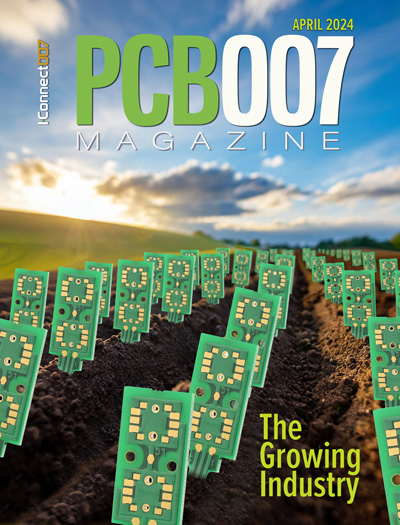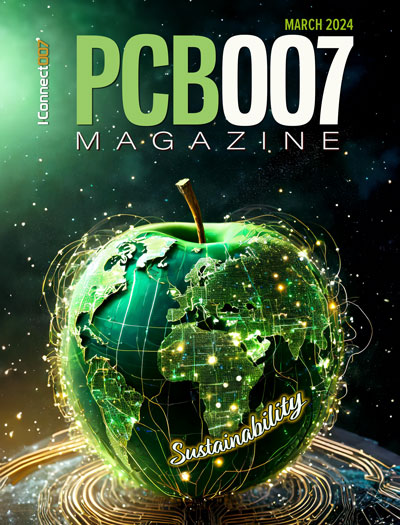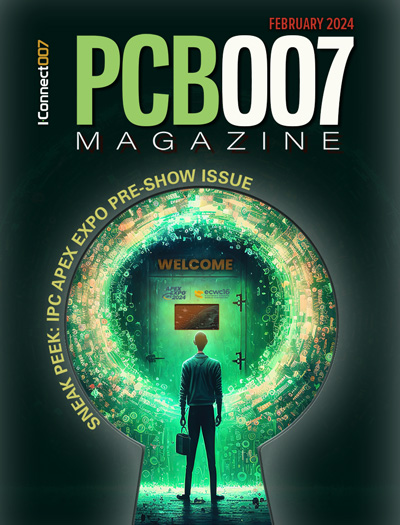-

- News
- Books
Featured Books
- pcb007 Magazine
Latest Issues
Current Issue
The Growing Industry
In this issue of PCB007 Magazine, we talk with leading economic experts, advocacy specialists in Washington, D.C., and PCB company leadership to get a well-rounded picture of what’s happening in the industry today. Don’t miss it.

The Sustainability Issue
Sustainability is one of the most widely used terms in business today, especially for electronics and manufacturing but what does it mean to you? We explore the environmental, business, and economic impacts.

The Fabricator’s Guide to IPC APEX EXPO
This issue previews many of the important events taking place at this year's show and highlights some changes and opportunities. So, buckle up. We are counting down to IPC APEX EXPO 2024.
- Articles
Article Highlights
- Columns
Search Console
- Links
- Events
||| MENU - pcb007 Magazine
MacDermid Enthone Talks Wet Processing Trends in 2018
July 24, 2018 | I-Connect007Estimated reading time: 1 minute
I-Connect007’s Patty Goldman, Barry Matties, Andy Shaughnessy, and Happy Holden were recently joined by MacDermid Enthone team members Jordan Kologe, technical marketing specialist; Ted Antonellis, applications manager for electronics specialties; and Don Cullen, marketing director for electronics solutions and MacDermid performance solutions. The discussion topic was the wet processing end of PCB manufacturing.
Patty Goldman: We’re here to talk about wet processing for PCB manufacturing. What do we need our readers to know about wet processes?
Don Cullen: We just got back from some customer roadmap sessions in China, Thailand, Taiwan, Singapore, Korea, Hong Kong. A couple of the themes that are going through my head include the transition of automotive circuitry to finally adopting HDI and microvia designs. It is kind of surprising they hadn’t really done it yet, but that seems to be happening this year. Also, there’s a big theme around circuit boards becoming more like IC substrates and IC substrates trying to emulate the cost and productivity advantages of circuit boards.
We’re all trying to marry up the technology and fine line/fine pitch metrics between wafers, IC substrates, and bare PCBs. It all affects the trends in SAP and modified SAP technology.
Barry Matties: From the applications engineer point of view, what challenges are they looking to solve that’s currently in place?
Ted Antonellis: We support a lot of different processes. I spend most of my time in bonding chemistry , the alternative oxides. People want smoother and smoother coppers for signal integrity, so there are newer processes that depend more on chemical bonding than the actual mechanical bonding to improve on that.
To read the full version of this article which originally appeared in the June 2018 issue of PCB007 Magazine, click here.
Suggested Items
Book Excerpt: The Printed Circuit Assembler’s Guide to... Factory Analytics
04/24/2024 | I-Connect007 Editorial TeamIn our fast-changing, deeply competitive, and margin-tight industry, factory analytics can be the key to unlocking untapped improvements to guarantee a thriving business. On top of that, electronics manufacturers are facing a tremendous burden to do more with less. If you don't already have a copy of this book, what follows is an excerpt from the introduction chapter of 'The Printed Circuit Assembler’s Guide to... Factory Analytics: Unlocking Efficiency Through Data Insights' to whet your appetite.
Listen Up! The Intricacies of PCB Drilling Detailed in New Podcast Episode
04/25/2024 | I-Connect007In episode 5 of the podcast series, On the Line With: Designing for Reality, Nolan Johnson and Matt Stevenson continue down the manufacturing process, this time focusing on the post-lamination drilling process for PCBs. Matt and Nolan delve into the intricacies of the PCB drilling process, highlighting the importance of hole quality, drill parameters, and design optimization to ensure smooth manufacturing. The conversation covers topics such as drill bit sizes, aspect ratios, vias, challenges in drilling, and ways to enhance efficiency in the drilling department.
Elevating PCB Design Engineering With IPC Programs
04/24/2024 | Cory Blaylock, IPCIn a monumental stride for the electronics manufacturing industry, IPC has successfully championed the recognition of the PCB Design Engineer as an official occupation by the U.S. Department of Labor (DOL). This pivotal achievement not only underscores the critical role of PCB design engineers within the technology landscape, but also marks the beginning of a transformative journey toward nurturing a robust, skilled workforce ready to propel our industry into the future.
Winner of The Science Show Rakett 69 Receives Incap Scholarship
04/24/2024 | IncapThe winner of the Rakett 69 science show, Andri Türkson, who stood out as an electronics enthusiast, received a scholarship from Incap Estonia, along with an internship opportunity in Saaremaa.
Alternative Manufacturing Inc. Awarded QML Requalification to IPC J-STD-001 and IPC-A-610
04/24/2024 | IPCIPC's Validation Services Program has awarded an IPC J-STD-001 and IPC-A-610 Qualified Manufacturers Listing (QML) requalification to Alternative Manufacturing Inc (AMI).


